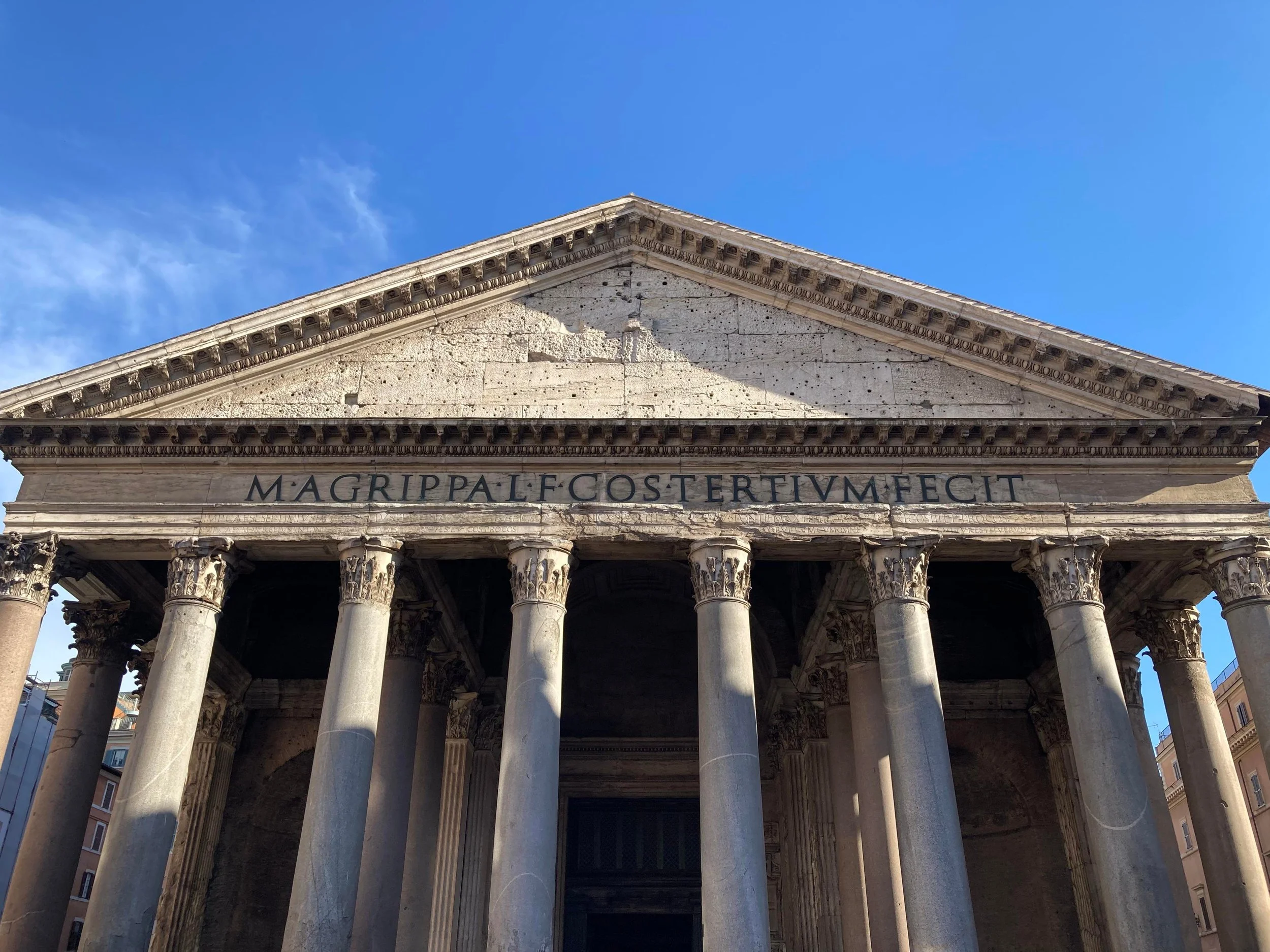When in Rome
Story and photos by Adnan Ahsan
Vendi, Vidi, Edi — I came, I saw, I ate.
A cheeky distortion of a popular phrase by Julius Caesar, Dictator of Rome and namesake of the Caesar Salad. Yet it was not Caesar who I met on my blisteringly hot first day in Rome but a street band blasting ‘We No Speak Americano’ while Italians and tourists danced in view of The Colosseum. Rome, the Eternal City, is a bustling modern metropolis wearing the ancestral and regal robes of its predecessors. Whether you are walking the same streets Roman Emperors had or dining at a hole in the wall Osterias, it will be an unforgettable historical and cultural adventure.
I started my jet-lagged trip by visiting one of the most recognizable landmarks of Rome, the ever-imposing Colosseum. Home to the glorious gladiators during the Roman Empire’s heyday, I dived headfirst into the lower rungs of the defunct combat arena. A bevy of roped-off walkways to collapsed sections of the stadium herd you along a specific route bypassing open-air museums. The museums are fun little side attractions, detailing the daily ongoings of the Colosseum from the apex of its popularity to its decline during the late Roman Empire and its rebirth as a modern-day monument. I ascended large stone steps to the upper rung of the Colosseum and came to experience the view of a Roman citizen looking down into the bloody deathmatches waged millennia ago. As I made a full rotation around the Colosseum, I eventually arrived at the middle rung with a platform jutting out into the arena, giving me a view that a gladiator would have ready for glory. I imagined watching the matches as if they were put on for just my entertainment - for an exalted Emperor. Pictures on Google do not do the Colosseum justice.
“Walking those same paths carry the weight of history.”
Parthenon, by Adnan Ahsan
Upon exiting the Colosseum, immediately I found myself heading to the Palatine Hill. This is a lesser-known area in the Eternal City but during the Roman time, it was the center of political life. Ascending the Hill I came across a collection of well-preserved villas and gardens of famous Roman senators as well as the crumbled palace of the Emperor. Walking on the same steps famous and infamous Emperors like Augustus or Nero had put things into perspective and speaks to the longevity of the city.
What did those Emperors think while walking the same hallways I now walk?
Exiting the Imperial Palace, I came across the rubble of the Roman forum. It may not seem like much, but the forum is where Rome began, from its growth as a republic in its mythic past to its ascendance as an empire after the assassination of Caesar.
The trip to the Colosseum and the Palatine Hill is a long affair and can take up to six hours to see it all. One finds themselves with a big appetite after it and luckily Rome is the city to be if you're yearning for a great meal. Arriving from the Imperial Palace I headed to Tavernaccia Da Bruno in the Trastevere District for lunch, a recommendation I received from a friend. Passing Trajan’s Column and crossing the Tiber, Tavernaccia Da Bruno is a sizable walk but worth it. The friendliness of the waiters makes one feel at home and they are happy to see tourists attempt to order in Italian, even helping your pronunciation. I ordered a Veal Brisket, Petto di Vitella alla Fornara and Rigatoni alla Matriciana, a meal fit for an Emperor, eating in a rustic but medium brow brick building with a bustling atmosphere. Throughout my visit, I noticed sometimes if I attempted to order in Italian the servers would dock a gelato dessert or coffee.
I inquired about this and one very friendly waiter told me I can pay it back by continuing to learn Italian.
I had experienced what a Roman citizen, gladiator, and emperor would have and yet there is still another millennia to see of the eternal city. I sought out various Renaissance-era piazzas that dot the city, famous ones such as the Piazza Navona or the Spanish Steps, admiring the beautiful architecture and history. Piazza Navona for one was originally an open air stadium created by Emperor Domitianus until it was converted into a market and center of sculpture art during the pontificate of Pope Innocent X. By the time of Italy’s unification in 1870, the market had been removed and stood ever imperial as Italian revolutionaries seized the city from Pope Pius XI. In a way, Piazza Navona throughout the centuries serves as a sort of metaphor for the city of Rome. From Emperors to Popes to revolutionaries, the Piazza itself never changed but collected adornments throughout history that brought it to the modern day. Much like Rome, one can view the empire of old but live in the present of a modern and constantly evolving city.
As you walk through Rome, its nickname as the “Eternal City” will evidently ring true. Rome wears its ancient history proudly and does not fail to impress in both its grandeur and prestige. The food in itself will leave you craving to come back and the friendliness of the Italian people knows no bounds. Not once did I feel like a tourist but the Emperor of Rome. If you ever have the opportunity to go to Rome, take it and upon arriving loudly proclaim like any freshman who had their second class in elementary Latin: “Carpe Diem!”.

